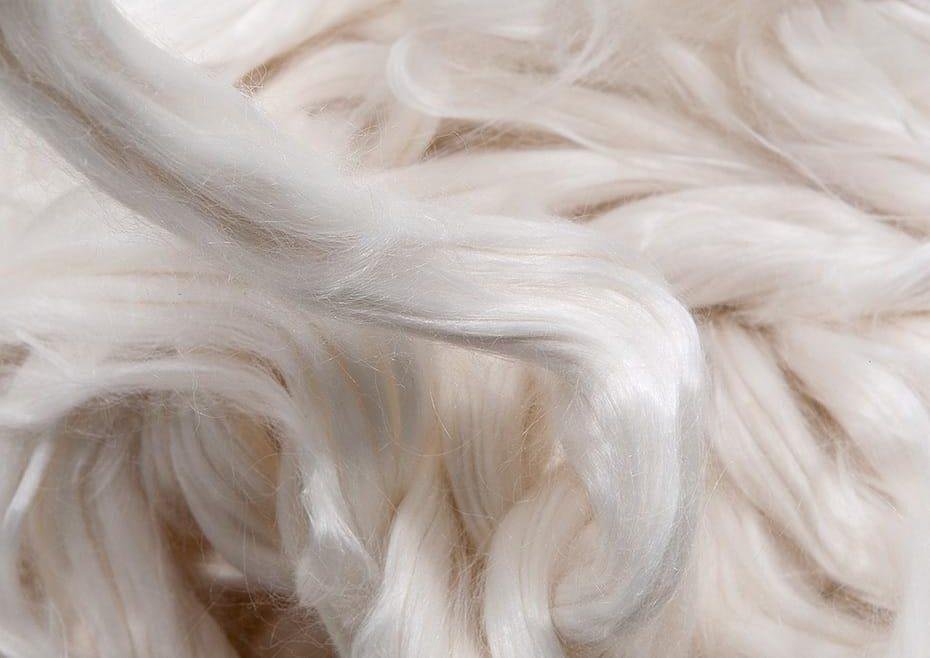Material Guide: Tencel
Photo: TencelTM
Photo: TencelTM
Tencel, also known as lyocell, is a sustainable textile material that has gained popularity in recent years. Made from the wood pulp of eucalyptus trees, the production process uses a closed-loop system that recycles up to 99% of the solvents used. This results in a fabric that is not only environmentally friendly but also has a luxurious feel, similar to silk or cotton.
One of the main environmental benefits of Tencel is its low impact on water usage. Eucalyptus trees require much less water than other crops, and the closed-loop production process reduces water usage by recycling the solvents used. Additionally, Tencel is biodegradable and can decompose within a few months, unlike synthetic fibers that can take hundreds of years to break down.
Another advantage of Tencel is its versatility. It can be used in a wide range of products, from high-end fashion to activewear and home textiles. Its durability and moisture-wicking properties make it an ideal choice for sportswear, while its softness and breathability make it a comfortable option for bedding and home decor.
Globally, Tencel has seen an increase in use and sales, particularly in the fashion industry. Brands such as Levi's, H&M, and Patagonia have incorporated Tencel into their collections, offering eco-friendly and sustainable options for consumers. According to a report by Allied Market Research, the global Tencel market is expected to reach $2.56 billion by 2025, driven by the growing demand for sustainable and eco-friendly fabrics.
In conclusion, Tencel is a sustainable textile material with a range of benefits, including its low impact on water usage, biodegradability, versatility, and softness. Its popularity has grown globally, with an increasing number of brands incorporating it into their collections. As consumers become more conscious of their environmental impact, Tencel offers a viable alternative to traditional textiles, making it a material to watch in the coming years.
However, a final note, is that the use of sustainable materials does not make a brand sustainable. Neither does it make your closet sustainable. High consumption of Tencel-clothing that is only worn a few times is not a sustainable solution. Make sure you use what you have, take care of it and buy second-hand before looking into sustainable materials.
Photo: TencelTM
Photo: Chicvegan
References:
"What is Tencel? Everything you need to know about the sustainable fabric." Good Housekeeping. Accessed on February 27, 2023. https://www.goodhousekeeping.com/uk/fashion-beauty/style-advice/a31493419/what-is-tencel/
"What is Tencel?" Sustainable Jungle. Accessed on February 27, 2023. https://www.sustainablejungle.com/sustainable-fashion/what-is-tencel/
"Tencel Market by Type, Application, and Geography - Global Forecast to 2025." Allied Market Research. Accessed on February 27, 2023. https://www.alliedmarketresearch.com/tencel-market
"Tencel™ Lyocell fiber." Lenzing AG. Accessed on February 27, 2023. https://www.lenzing.com/products/tencel-lyocell-fiber/
"Tencel vs. Cotton: Which Is Better?" Good On You. Accessed on February 27, 2023. https://goodonyou.eco/tencel-vs-cotton-which-is-better/
"Tencel - The Sustainable Fabric Taking The Fashion World By Storm." The Sustainable Angle. Accessed on February 27, 2023. https://www.thesustainableangle.org/tencel-the-sustainable-fabric-taking-the-fashion-world-by-storm/




